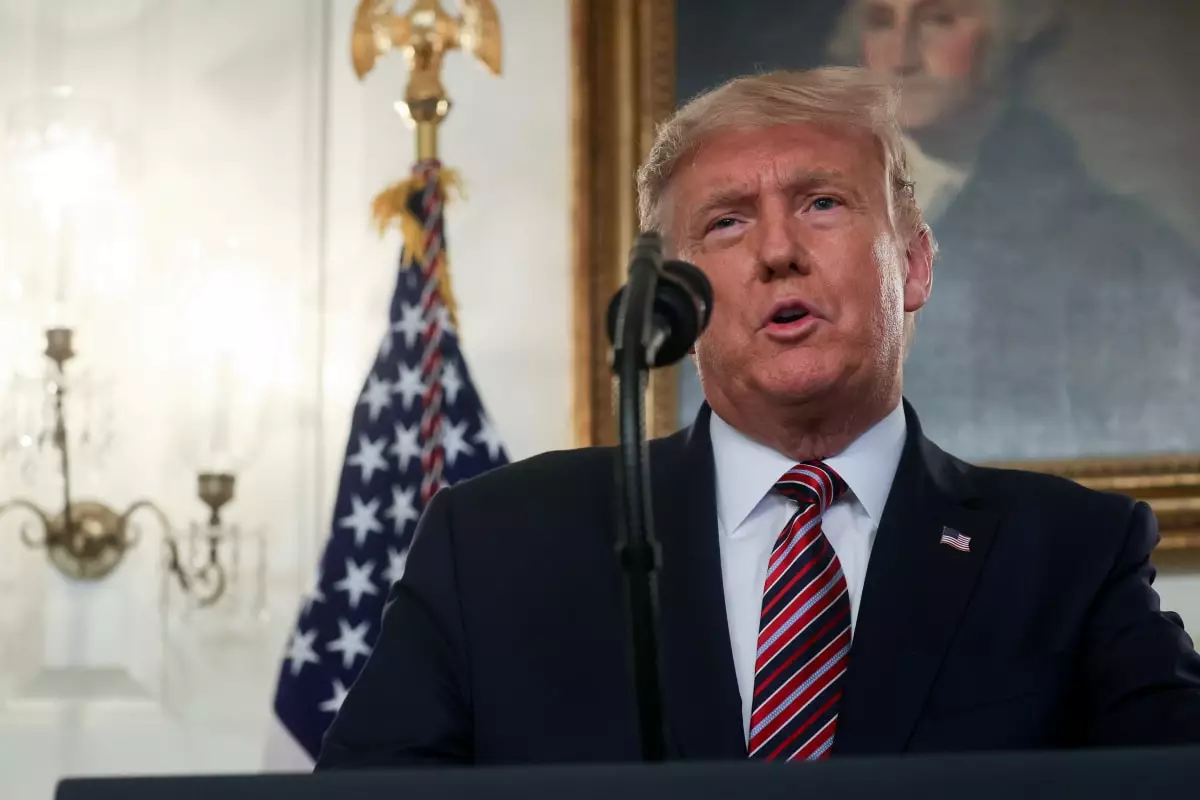In a significant move for the cryptocurrency landscape, former U.S. President Donald Trump convened a summit at the White House bringing together prominent figures from the crypto sector, marking an unprecedented collaboration between lawmakers and industry innovators. This gathering symbolizes a pivotal shift, as it represents the first occasion where high-ranking government officials directly engage with leaders from a sector that, until now, has often existed in a state of tension with regulatory bodies. The undercurrent of optimism was palpable as stakeholders anticipated fresh regulatory frameworks that could either support or stifle the burgeoning industry.
Trump’s insistence that the U.S. Securities and Exchange Commission (SEC) present a comprehensive approach to crypto regulations by the end of August establishes an ambitious timeline that reflects the urgency felt by many in the industry. Chris Dixon, a notable partner at investment firm a16z crypto, underscored the importance of this timely directive, indicating a broader consensus among industry leaders that the moment for decisive regulatory action had arrived.
A Balanced Approach: Acknowledging Risks and Opportunities
During the summit, discussions veered towards the dual-edged nature of cryptocurrencies and stablecoins. While some cautionary voices continue to ring in warnings about potential fraud and market volatility, leaders like Dixon call for “thoughtful, comprehensive policies” that can harness the transformative potential of these technologies. This sentiment resonates deeply in today’s climate—where innovation can rapidly outpace regulation, presenting both challenges and opportunities.
The presence of top cabinet members, including Treasury Secretary Scott Bessent and White House crypto czar David Sacks, further reinforced a message: The U.S. is not merely an observer but an active participant in shaping the future of financial systems. Their commitment to sustaining the dollar’s status as the world’s dominant reserve currency while exploring the utilization of stablecoins reflects an enlightened approach that strives to balance innovation with stability, cautioning us against reckless acceptance of any new technology without a considered framework.
Transactional Evolution: Banks and Crypto Collide
A groundbreaking update followed the summit when the U.S. Office of the Comptroller of the Currency (OCC) announced that banks could now engage in selected crypto-related services, heralding the dawn of financial institutions dipping their toes into the crypto waters. This move to reverse long-standing restrictions indicates a dramatic evolution in the regulatory stance, positioning banks as potential enablers of crypto activities rather than barriers.
Sergey Nazarov, co-founder of Chainlink, articulated a sentiment shared by many attendees: the U.S. government’s increasing openness to collaborating with the cryptocurrency sector signals a vital evolution in our financial fabric. Increased engagement from traditional banking sectors could foster a wave of legitimacy for digital assets, bridging the chasm between traditional finance and the innovative crypto market.
Disappointment amid Optimism: The Market’s Response
Yet, juxtaposed against the optimism generated by the summit was the disheartening reality of the crypto market’s volatile state. Despite the potential for evolving regulations paving the way for new heights in market valuations, the immediate aftermath saw Bitcoin trading down significantly, alongside a slump in the overall market valuation. Investors had clearly treaded cautiously, instilling a sense of mixed emotions among stakeholders.
Brian Armstrong, CEO of Coinbase, aims to expand operations significantly—projecting the addition of 1,000 Web3-related positions by 2025 in light of this renewed regulatory environment. This ambition highlights a financial commitment to growth amid uncertainty; however, it also illustrates an industry heavily reliant on the whims of regulatory frameworks. As optimism flourishes in some corners, many investors face a daunting road filled with risks that could either mitigate or compound their financial exposures.
Presidential summits can serve as critical junctures for industries at the precipice of transformation. Though the market reaction may not have been immediately favorable, the conversations initiated at the White House present an undeniable opportunity for the U.S. to weave cryptocurrency into the fabric of its financial future. The outcomes of this summit demonstrate that the path forward may not be entirely clear, but the commitment to understanding and embracing this digital frontier has never been more pronounced. Predictably, as we watch the evolution of policies and markets, it will be essential to remain both vigilant and hopeful.


Leave a Reply